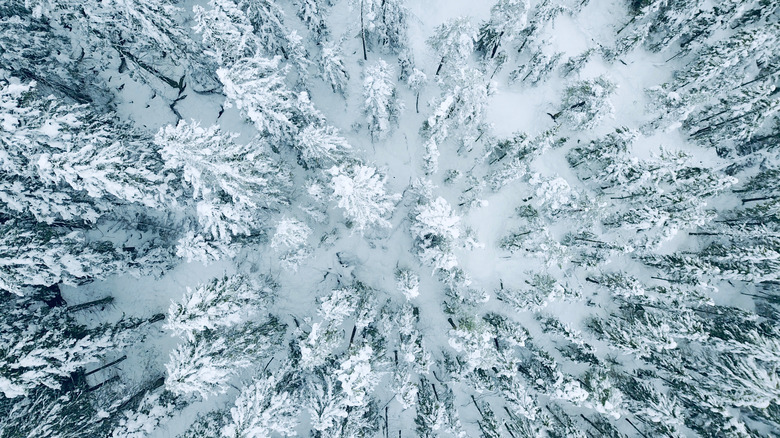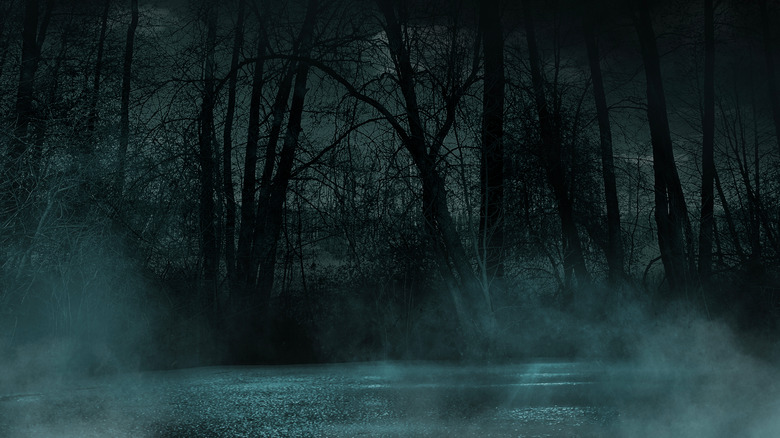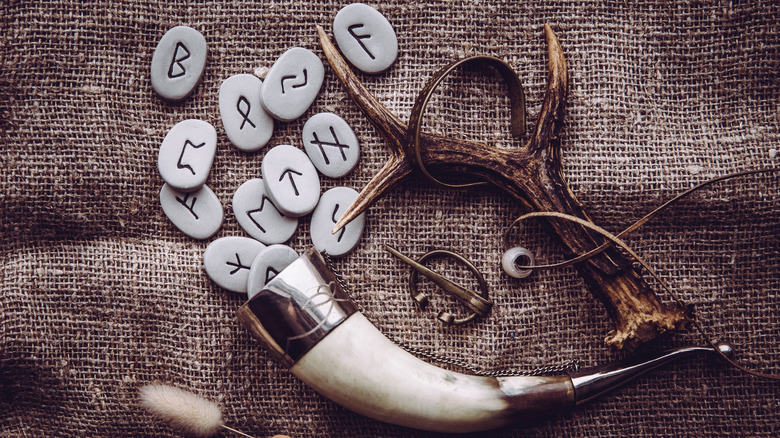The Swedish New Year's Year Walk Tradition Explained
If giant dropping balls in Times Square are to be believed, New Year's celebrations are things of shouting into cameras, alcoholic benders, and thousands of pounds of confetti suffocating the pavement (as Gothamist points out). And yet, New Year's is also a time of introspection and renewal, when people make all sorts of lists of (rarely resolved) "resolutions." In Japan, New Year's is about family time and visiting temples and shrines (per Savvy Tokyo). New Year's customs in Spain involve eating grapes out of a glass (per España). Folks in Nigeria might burn car tires in the streets to sear away old evils (per Nollymania). In Sweden? Well, they've got a different approach.
New Year's traditions in Sweden involve reconnecting to nature and keeping an ear out for its messages. On one hand, the natural world is full of things like bears that can obliterate our bodies. Modernly, we guard ourselves against nature with wooden walls, indoor plumbing, jackets for cold weather, etc. On the other hand, the natural world also means serene strolls through silent woods. The crunch of the grass, the chill of the air, the scent of the underbrush, and so on.
This is what a Swedish New Year's "Year Walk" — an "årsgång" — is all about (as Spirituality & Health summarizes). Not just a meditative Walden Pond hike, but the risk of exposure to dangers. Year Walks are deep, dark treks to let the natural world show you whatever you've got to see.
A midnight walk of omens and darkness
Swedish Year Walks are most closely analogous to Native American "vision quests," like the Lakota "Hanblecheyapi" (translated as "crying for a vision," per Medicine of One). In such rituals, folks undergo a rite of passage by getting in contact with a spirit guide that shows them signs, omens, and truths about themselves and the world. A Year Walk differs by being undertaken sometime from the winter solstice (December 21) to New Year's Eve (as The Travel explains). Walkers focus on gaining insight about the upcoming year. Plus, it adds a heaping helping of pagan-Christian fusion rituals, an unnerving overnight walk, and preferably, a church or cemetery.
As Shaman Healer Painter tells us, folks embarking on a tradition Year Walk are expected to follow a specific procedure and make certain sacrifices. The walk has to start at midnight, and must finish before dawn. For the entire day before, a walker is supposed to sit alone in silence, in the dark, with no food. This is kind of a purification ritual to separate "physical" and "spiritual" worlds.
A walker must emerge precisely at midnight and start walking toward a church or cemetery. After arriving, the walker circles the location counterclockwise before walking up to a keyhole (if there is one), renouncing one's faith (temporarily), and blowing into the keyhole. Counterclockwise movement, or "widdershins" as it's called in heathen circles, has the effect of negating undesired things, rather than inviting them in (as Occult World explains).
An ancient, Nordic tradition
Year Walks derived from Norse culture, which originated in modern-day Scandinavia (Norway, Denmark, and Sweden). You know: Thor, Odin, Loki, Yggdrasil the world tree, and so on. It's not clear exactly when and where the ritual started, but it definitely evolved while Sweden was officially a Christian country (it converted in the mid-12th century, per the BBC). This means that Year Walks were practiced in a semi-secret, heretical way. The 17th through early 20th centuries, as Spirituality & Health says, were the ritual's "heyday," particularly in rural Sweden. As Shaman Healer Painter indicates, this means the roots of årsgång go back hundreds of years prior, and likely evolved differently region to region.
In general, walkers are not allowed to "laugh, stray from the path, or look back, and he or she needed to be prepared to see things that could seem comical, alarming, or baneful," as Swedish researcher Tommy Kuusela states. More terrifying sights to look for on the way: the brook-horse ("bäckahäst") who carries children off to drown in rivers, and the huldra, a deadly and seductive spirit with tree bark for skin. Some folks, as The Travel says, reportedly lost their sanity on Year Walks and were never the same again. Those who made it home could return with news of what the year held in store.
Or, you know, you can just take a nice New Year's hike in the woods to clear your head. Up to you.


